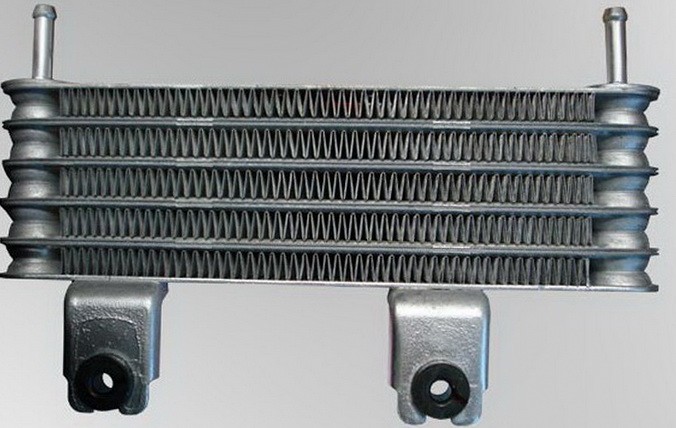
Symptoms of a Bad or Faulty Oil Cooler Hose (Automatic Transmission)
Content
Common signs include visible hose damage, oil leaks around fittings, transmission overheating, and worn rubber.
The transmission oil cooler hose on a vehicle helps carry transmission fluid from the transmission to the transmission cooler. The oil cooler is designed to lower the temperature of the transmission fluid to make it easier to use the internal parts of the transmission. There are two types of transmission coolers: the one that is inside the radiator, or the one that is outside the radiator, which is usually in front of the AC condenser. Oil cooler hoses are made from both rubber and metal. Typically these hoses run from the cooler to the transmission where they screw in. Without these lines doing their job for which they are designed, it would be impossible to cool the transmission.
The heat from your car's transmission can be very damaging to the components it's housed in. Over time, the rubber on the oil cooler hose will wear out. Having a damaged oil cooler hose can lead to a number of different problems that can compromise the overall functionality of your vehicle.
1. Visible damage on the hose
From time to time it is recommended to inspect the components under the hood. When performing this type of check, you will need to take a look at the transmission cooler hose. If you notice that there is visible damage on this hose, then you will have to act quickly. Replacing this hose before it completely fails can save you a lot of trouble.
2. Oil leakage around lines
The next thing you may notice when it's time to replace the oil cooler line is oil leaking around the hose fittings. Typically, these hoses have o-rings and gaskets that seal the compression end of the hose. If these gaskets are damaged they will be very hard or oil will remain in the lines as intended since this is a pressurized system. Once the oil is noticed, you will need to get a replacement to avoid losing too much fluid.
3. Transmission overheating
When the transmission oil cooler hose fails, it can cause the transmission to overheat. This may be due to low fluid levels due to leakage or flow prevention. In any case, if the transmission overheats, it may completely stop working, and this condition may be permanent. If the transmission is overheating, the Check Engine light will usually come on.
4. Wear of the rubber part of the hose.
If you're starting to notice that the rubber part of your oil cooler hose is wearing out, it might be worth replacing. When the rubber shows signs of wear, it is only a matter of time before it begins to leak. Replacing the hose is the best way to reduce the chance of an oil leak.

